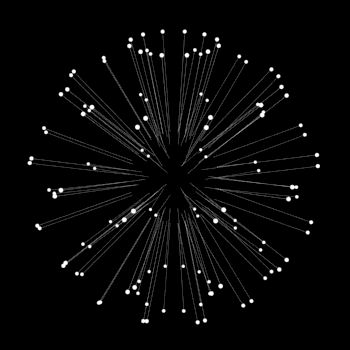First I will rewrite the expressions in the form of #a+bi#
#(3+i)/(7-3i)#
For a complex number #z=a+bi#, #z=r(costheta+isintheta)#, where:
- #r=sqrt(a^2+b^2)#
- #theta=tan^-1(b/a)#
Let's call #3+i# #z_1# and #7-3i# #z_2#.
For #z_1#:
#z_1=r_1(costheta_1+isintheta_1)#
#r_1=sqrt(3^2+1^2)=sqrt(9+1)=sqrt(10)#
#theta_1=tan^-1(1/3)=0.32^c#
#z_1=sqrt(10)(cos(0.32)+isin(0.32))#
For #z_2#:
#z_2=r_2(costheta_2+isintheta_2)#
#r_2=sqrt(7^2+(-3)^2)=sqrt(58)#
#theta_2=tan^-1(-3/7)=-0.40^c#
However, since #7-3i# is in quadrant 4, we need to get a positive angle equivalent (the negative angle goes clockwise around the circle, and we need an anticlockwise angle).
To get a positive angle equivalent, we add #2pi#, #tan^-1(-3/7)+2pi=5.88^c#
#z_2=sqrt(58)(cos(5.88)+isin(5.88))#
For #z_1/z_2#:
#z_1/z_2=r_1/r_2(cos(theta_1-theta_2)+isin(theta_1-theta_2))#
#color(white)(z_1/z_2)=sqrt(10)/sqrt(58)(cos[tan^-1(1/3)-(tan^-1(-3/7)+2pi)]+isin[tan^-1(1/3)-(tan^-1(-3/7)+2pi)])#
#color(white)(z_1/z_2)=sqrt(145)/29(cos[tan^-1(1/3)-tan^-1(-3/7)-2pi]+isin[tan^-1(1/3)-tan^-1(-3/7)-2pi])#
#color(white)(z_1/z_2)=sqrt(145)/29(cos(-5.56)+isin(-5.56))#
#color(white)(z_1/z_2)=sqrt(145)/29cos(-5.56)+isqrt(145)/29sin(-5.56)#
#color(white)(z_1/z_2)=0.311+0.275i#
Proof:
#(3+i)/(7-3i)*(7+3i)/(7+3i)=((3+i)(7+3i))/((7-3i)(7+3i))=(21+7i+9i+3i^2)/(49+21i-21i-9i^2)=(21+16i+3i^2)/(49-9i^2)#
#i^2=-1#
#=(21+16i-3)/(49+9)=(18+16i)/58=9/29+8/29i~~0.310+0.275i#

